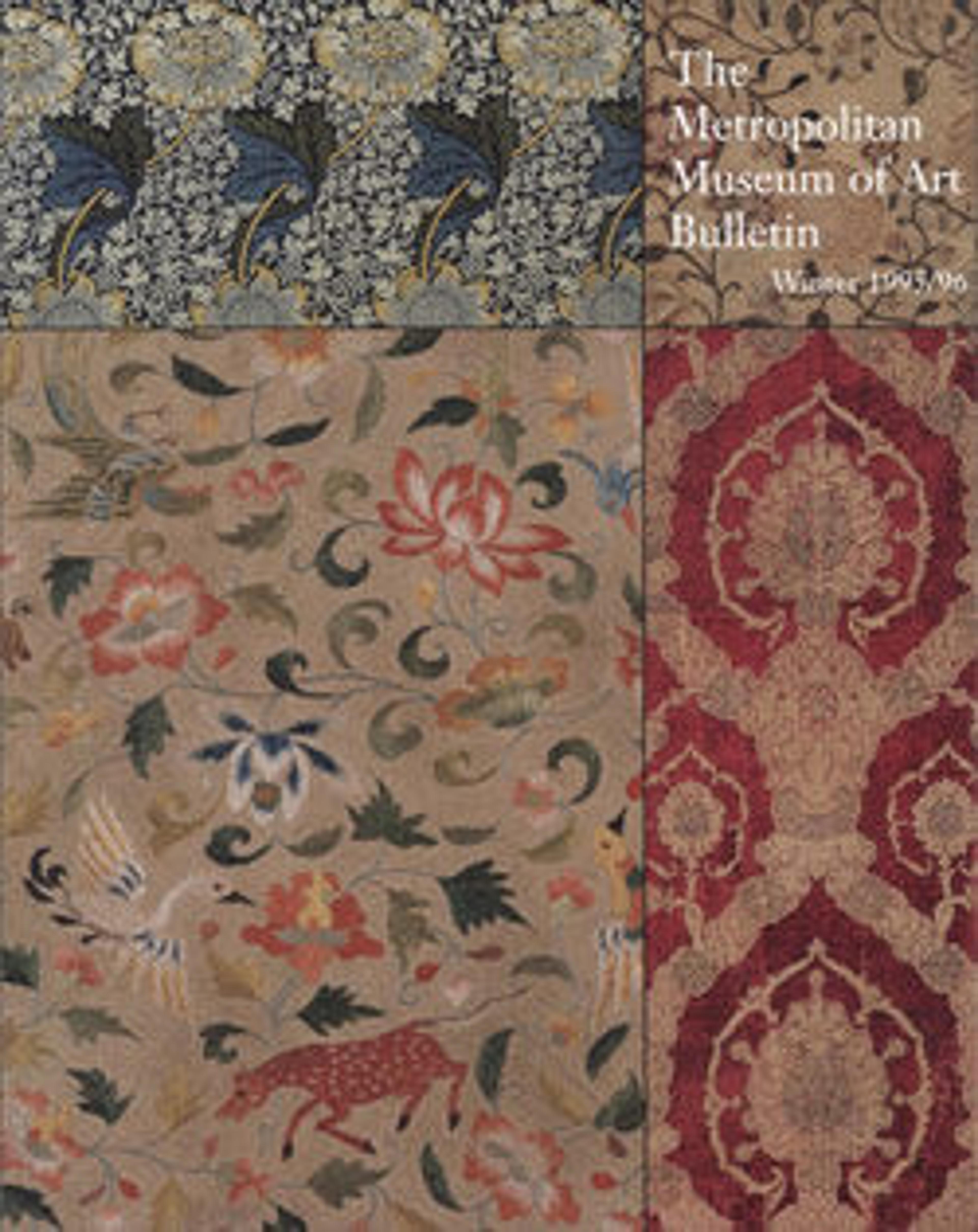Noh Costume (Nuihaku) with Books and Nandina Branches
On this robe, scattered books decorated with seasonal motifs and poetic patterns evoke the aristocratic world of the Heian period (794–1185) and literary masterpieces such as The Tale of Genji. At the same time, they reflect the rise in publishing and literacy during the Edo period. Among the patterns on the books are waves with seashells (upper back, left) and flat bamboo baskets with cherry blossoms (lower back, left). The naturalistic depiction of the auspicious nandina plant, with its colorful red and pink berries, appears from hem to shoulder. Such tree patterns are commonly found on garments from the late eighteenth century, but are unusual for a Noh robe. With its solid gold ground, this robe is especially splendid, and it was likely worn by actors playing upper-class women.
Artwork Details
- 胴箔地南天冊子模様縫箔
- Title: Noh Costume (Nuihaku) with Books and Nandina Branches
- Period: Edo period (1615–1868)
- Date: second half of the 18th century
- Culture: Japan
- Medium: Silk embroidery and metallic leaf on silk satin
- Dimensions: Overall: 65 1/4 x 56 3/4 in. (165.7 x 144.1 cm)
- Classification: Costumes
- Credit Line: Gift of Mr. and Mrs. Paul T. Nomura, in memory of Mr. and Mrs. S. Morris Nomura, 1989
- Object Number: 1989.367
- Curatorial Department: Asian Art
Audio
8842. Noh Costume (Nuihaku) with Books and Nandina Branches
0:00
0:00
We're sorry, the transcript for this audio track is not available at this time. Please email info@metmuseum.org to request a transcript for this track.
More Artwork
Research Resources
The Met provides unparalleled resources for research and welcomes an international community of students and scholars. The Met's Open Access API is where creators and researchers can connect to the The Met collection. Open Access data and public domain images are available for unrestricted commercial and noncommercial use without permission or fee.
To request images under copyright and other restrictions, please use this Image Request form.
Feedback
We continue to research and examine historical and cultural context for objects in The Met collection. If you have comments or questions about this object record, please complete and submit this form. The Museum looks forward to receiving your comments.
